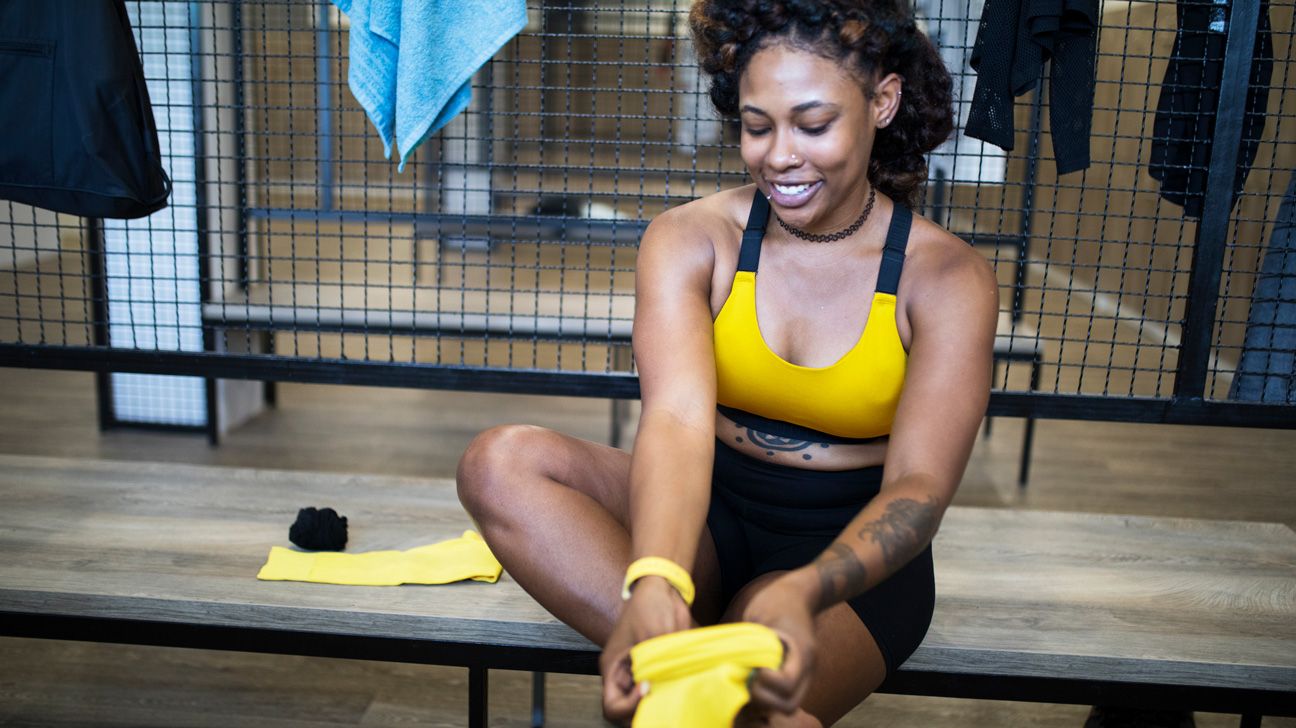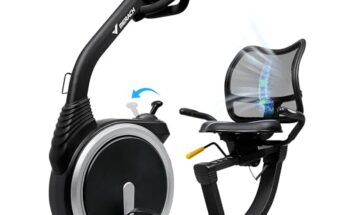A full body workout targets all major muscle groups in a single session. It’s an efficient way to build strength and endurance across the entire body.
Embarking on a full body workout routine can offer a comprehensive fitness solution for those tight on time or seeking simplicity in their exercise regimen. Tailored to engage multiple muscles, such workouts deliver a balanced approach to physical training. They typically involve compound movements like squats, deadlifts, and bench presses that maximize calorie burn and muscle development in a cohesive manner.
By combining upper and lower body exercises within the same workout, full body routines stimulate muscle growth and improve overall flexibility. These workouts are not only beneficial for newcomers but also favored by seasoned athletes due to their effectiveness in maintaining uniform physique and functional strength.
Benefits Of Full Body Workout Routines
Exploring the world of full body workout routines reveals a treasure trove of benefits. Full body workouts engage multiple muscle groups. This allows you to maximize your time at the gym. Working out smarter, not harder, is the key to fitness success. Let’s dive into the highlights of these routines.
Boosting Metabolism And Fat Loss
Full body workouts turn bodies into calorie-burning machines. By working various muscles, the body keeps burning fat even after the session ends. This metabolic boost helps in maintaining a lean physique. You can say goodbye to those stubborn fat zones.
- Increased calorie burn during and post-workout
- Stimulation of a higher metabolic rate
- Faster reduction in body fat percentage
Enhanced Muscular Recovery And Growth
Giving attention to all muscle groups fosters better recovery. Why? Because this approach prevents overtraining a single muscle group. Recovery days between workouts help muscles grow stronger. During rest, muscles repair and expand. They prepare for the next workout challenge.
- Stimulates muscle recovery
- Prevents overuse injuries
- Promotes overall muscle growth
Time-efficiency For Busy Lifestyles
Balancing life and fitness is easier with full body workout routines. These routines are perfect for tight schedules. Spend less time at the gym without sacrificing results. Achieve fitness goals quicker to enjoy more free moments daily.
| Traditional Workouts | Full Body Routines |
|---|---|
| Focus on one or two muscle groups | Target all major muscle groups |
| Longer hours in the gym | Short, efficient sessions |
| Frequent visits needed | Fewer days required |

Credit: greatist.com
Key Components Of An Effective Full Body Routine
A full-body workout engages all muscle groups in a single session. For maximum benefit, key components ensure every session is effective. The goal is to build strength, endurance, and balance, utilizing a varied range of movements.
Compound Movements: The Foundation
Compound exercises target multiple muscle groups at once. They serve as the core of a full-body workout plan. These movements help improve coordination and burn more calories due to the higher amount of muscles involved. Examples include squats, deadlifts, and bench presses.
- Benefits: Increases efficiency; builds more muscle.
- Frequency: Include in every workout.
- Variation: Mix different compound exercises to target all muscles.
Balancing Push And Pull Exercises
For a well-rounded routine, balance push and pull exercises. This ensures all opposing muscle groups get equal attention. Push exercises work triceps, chest, and shoulders. Pull exercises focus on biceps, back, and forearm muscles.
| Push Exercises | Pull Exercises |
|---|---|
| Push-Ups | Rows |
| Overhead Press | Pull-Ups |
| Dips | Deadlifts |
Including Core And Stability Training
Core and stability training are pivotal. They enhance balance, reduce injury risk, and support proper posture. Incorporate exercises like planks, bridges, and abdominal crunches. Use stability tools like a BOSU ball or a balance board for a challenge.
- Execute: Core exercises in controlled movements.
- Engage: Maintain a tight core throughout each exercise.
- Enhance: With stability tools for extra difficulty.
Designing Your Full Body Workout
Welcome to the core of constructing a full body workout that is tailored to your needs. Crafting a comprehensive routine demands a strategic approach to balancing frequency, selecting the right exercises, and determining optimal reps and sets. Let’s dive into what makes a full body workout not just effective, but also exciting and sustainable.
Frequency: How Many Days a Week?Frequency: How Many Days A Week?
Strike the right balance in your workout routine with careful planning. Aim for 3 to 4 days per week to allow for adequate recovery. Full body workouts engage multiple muscle groups requiring rest days to rebuild.
Exercise Selection For Synergy
Choose exercises that work together to maximize efficiency. Incorporate a mix of compound movements that target several muscles simultaneously. Use the following guidelines when selecting exercises:
- Include a push, a pull, and a leg exercise.
- Balance exercises between upper and lower body.
- Focus on movements not muscles.
Setting Reps And Sets For Maximum Gains
Plan reps and sets based on your goals. For strength, aim for 4-6 reps over 3-5 sets. To build muscle, 8-12 reps are ideal, with 3-4 sets. Keep a steady pace and maintain form.
| Goal | Reps | Sets |
|---|---|---|
| Strength | 4-6 | 3-5 |
| Muscle Growth | 8-12 | 3-4 |
Nutrition And Recovery: Fuelling The Machine
Muscles need proper fuel to grow and recover from workouts. An effective fitness routine blends exercise with nutrition. Think of your body as a machine that requires quality fuel. This post dives into the nutrition and recovery essentials for your full body workout success.
Dietary Foundations For Muscle Growth
Eating for muscle growth means more than just increasing protein intake. Balance is key. Your body needs a rich mix of nutrients to perform and recover.
- Proteins: Building blocks for muscles
- Carbohydrates: Energy to power through workouts
- Fats: Necessary for hormone production and energy
- Vitamins and Minerals: Support metabolic processes
Importance Of Hydration And Sleep
Water is vital. It transports nutrients and removes waste. Dehydration can hurt performance. Aim for consistent water intake throughout the day. Sleep is your superpower for recovery. It’s when your muscles repair most. Seven to nine hours nightly is ideal for most individuals.
| Hydration Tip | Sleep Tip |
|---|---|
| Carry a water bottle | Set a sleep schedule |
Supplements To Support Full Body Workouts
Supplements can fill the gaps in your diet. They are not essential but can provide an edge in muscle recovery and growth. Here are some popular choices:
- Protein Powders: Convenient protein boost
- Creatine: Supports energy during intense activity
- Branched-Chain Amino Acids (BCAAs): Facilitate muscle recovery
- Multivitamins: Ensure all micronutrient needs are met
Progressive Overload And Adaptation
Progressive Overload is a fitness technique. It means adding more stress to your muscles over time. Adaptation happens when your body gets stronger. Your full body workout needs both to make you fitter.
Tracking Your Progress
Write down every workout to see changes. This can be sets, reps, or weights. Use a notebook or a fitness app to keep it handy.
| Date | Exercise | Weight | Reps | Sets |
|---|---|---|---|---|
| 04/10/2023 | Squat | 50kg | 10 | 3 |
When To Increase Weight Or Intensity
- Finished all sets and reps? Time to level up.
- New to lifting? Add small weights often.
- Workouts feel easy? Bump up the challenge.
Listen to your body. Rest if needed. Aim to improve slowly.
Dealing With Plateaus
Stuck at the same spot? It’s natural. Change something.
- Try new exercises for variety.
- Adjust your rest days or diet.
- Boost intensity with supersets.
Stay patient. Lift safely. Keep pushing forward.

Credit: m.youtube.com
Sample Full Body Workout Plans
Embarking on a full body workout journey shapes your fitness experience. Whether a gym novice, a dedicated enthusiast, or a seasoned athlete, a well-structured plan maximizes results. Below, find tailored workout regimens for every level of fitness.
Beginner Friendly RegimenBeginner Friendly Regimen
Starting your fitness journey can be daunting, but it doesn’t have to be. This beginner-friendly regimen introduces you to fundamental exercises. It ensures proper form and builds a strong base for future training.
- Squats: 3 sets of 10 reps
- Push-Ups: 3 sets of 10 reps or as many as possible
- Bent-Over Rows: 3 sets of 10 reps
- Stationary Lunges: 2 sets of 10 reps per leg
- Dumbbell Shoulder Press: 2 sets of 10 reps
- Plank: 3 sets, hold for 30 seconds
- Bicycle Crunches: 2 sets of 15 reps
Intermediate Strategy For Increased Challenge
Progressing from the basics, this intermediate strategy ups the ante. It introduces compound movements and increases volume for enhanced challenge and strength gains.
- Deadlifts: 4 sets of 8 reps
- Bench Press: 4 sets of 8 reps
- Pull-Ups or Assisted Pull-Ups: 3 sets of 6-8 reps
- Single-Leg Romanian Deadlifts: 3 sets of 8 reps per leg
- Dumbbell Lunges: 3 sets of 10 reps per leg
- Seated Dumbbell Press: 3 sets of 10 reps
- Core Circuit (Plank, Side Plank, Russian Twists): Repeat 3 times
Advanced Techniques For Experienced Lifters
Expert lifters, embrace the intensity. This advanced regimen incorporates challenging techniques. It’s designed to maximize hypertrophy and explosive power.
| Exercise | Sets | Reps |
|---|---|---|
| Barbell Squats | 5 | 5 |
| Weighted Pull-Ups | 4 | 4-6 |
| Clean and Press | 3 | 5 |
| Barbell Bent-Over Rows | 4 | 6-8 |
| Bulgarian Split Squats | 3 | 8 per leg |
| Dips – Chest Version | 3 | To failure |
| Ab Wheel Rollouts | 3 | 10-15 |

Credit: www.muscleandstrength.com
Frequently Asked Questions On Full Body Workout
What Is The Best Full Body Workout?
The best full body workout typically includes compound exercises such as squats, deadlifts, push-ups, and pull-ups. These moves target multiple muscle groups, maximizing efficiency and effectiveness. Tailor the intensity to fit your fitness level.
Which One Exercise Is Best For Full Body?
The burpee is an effective full-body exercise targeting multiple muscle groups for strength and cardiovascular benefits.
Is It Ok To Do Full Body Every Workout?
Yes, it’s acceptable to perform full-body workouts every session, provided you allow adequate recovery time between workouts to prevent overtraining and promote muscle growth.
Is 5 Exercises Enough For Full Body?
Yes, 5 exercises can cover a full-body workout if they target multiple major muscle groups effectively. Opt for compound movements for efficiency.
Conclusion
Embracing a full body workout routine can truly transform your fitness journey. It offers balanced muscle development and saves time. Remember, consistency is key. Keep challenging your limits and mix up exercises to stay motivated. Start now, and witness the powerful impact on your health and well-being.



